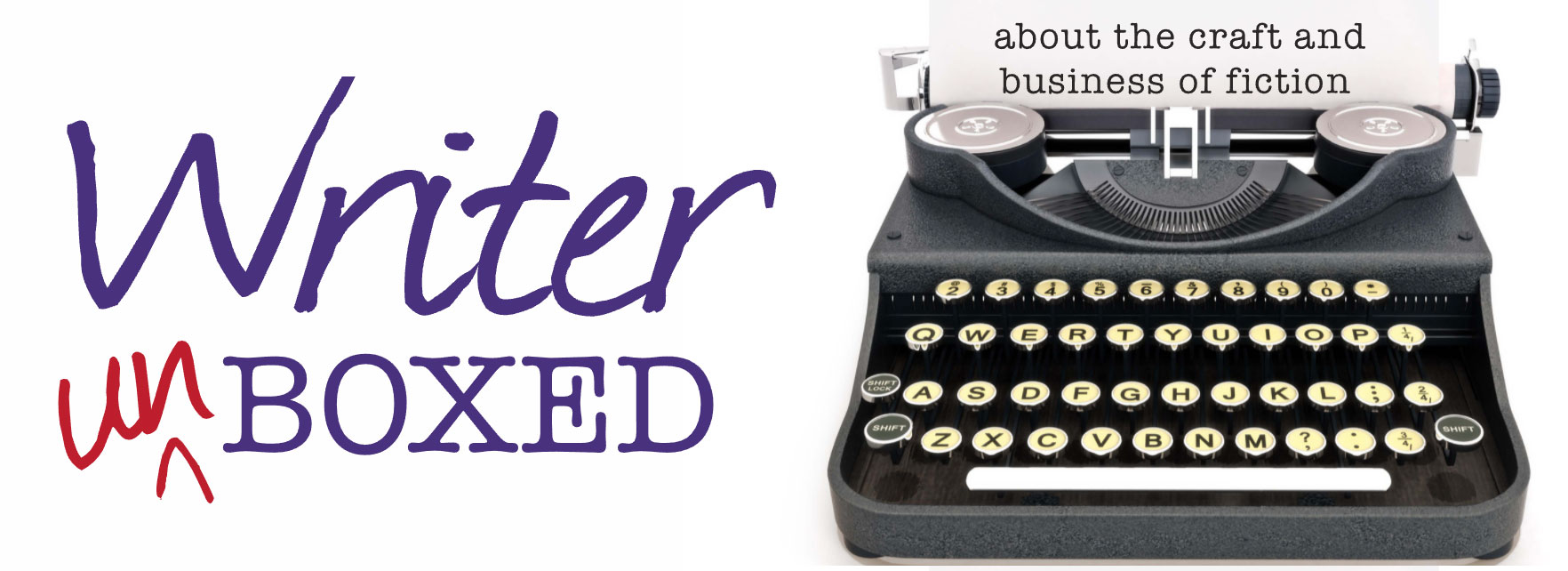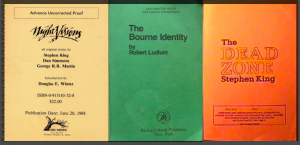Marketing
Flickr Creative Commons: Daniel Go
Greetings from the road! I’m out on book tour promoting Girl in Disguise, skipping around from the very north (Minnesota) to the very south (Alabama) of the country, filling my days and evenings with readings, signings, panels, book clubs and keynotes. Other than forgetting to pack my makeup remover, things are going pretty well so far.
Like most of publishing, book tours aren’t what they used to be. Which doesn’t mean they’re worse – or better – just different. From an economic standpoint, spending money on plane tickets, hotel rooms and car rentals for absolutely no guaranteed return on investment is, well, not entirely sense-making. Which is why book tours are the exception these days and not the rule. (“We’ll be leveraging your social media presence” is an oft-heard substitute, and perhaps I’ll write a different post about that.)
But visiting bookstores, libraries and other locations to talk about your book is an experience like no other. Those face-to-face interactions with readers are precious. I still regret not getting a photo with the reader whose boyfriend drove her three hours each way to bring her to my bookstore event in Toledo as a surprise. And while there are just as many ways to plan a book tour as there are ways to write a book, I thought I’d gather some tips from the pros – other authors who are out on tour with their books this spring – to provide some guidance.
Pam Jenoff, on tour for The Orphan’s Tale, suggests:
Take a sign-up sheet to collect email addresses for your mailing list. Some savvy writers bring an iPad and just have attendees type their addresses right in. Another thing is to bring postcards so that e-book readers can take them and download later.
Read MoreToday I want to talk about how having clear boundaries can HELP you gain momentum in three key areas:
Boundaries are a gift to your creative work. Embrace your boundaries. Let’s dig in…
Why Boundaries Help
I’m sure you have very real boundaries. You may care for kids, have responsibilities to loved ones, work a day job, support an ailing family member, work through bouts of anxiety, and struggle to make ends meet. These challenges are real.
It’s easy to look at others and assume that they have the following things that you don’t have at the moment: money, resources, time, physical energy, mental space, confidence, and skills.
They don’t. These other people struggle with their own unique set of boundaries. It is helpful to remember that nearly all creative work is crafted this way: amidst limitations, lack of resources, and incredible amounts of pressure.
This photo is a good reminder:
The image was taken and shared by Amanda Palmer of her husband Neil Gaiman, and the caption reads: “Neil Gaiman writing down ideas for his new novel as 9,000 people exit the Nick Cave show in Sydney.”
Some may look at this photo and only see someone who is “privileged”: two famous people attending a concert in a beautiful city.
Let’s put this in context. Some of what Neil is dealing with right now:
There is likely much more going on with him, such as public things around his creative work that I haven’t captured here. But there are also likely private things he is dealing with that we couldn’t possibly know about. Difficult situations, someone close to him dealing with a health crisis, navigating his own relationship, perhaps a business situation that isn’t going as expected, managing his own physical and mental health, and so much else.
Read MoreI’ve been an avid Amazon shopper since the mid-90s. It started with books, but as we moved into the 21st century it’s come to where I now buy everything from groceries to musical instruments from this Seattle-based behemoth. From the start, one of the biggest differentiating features Amazon offered was its user reviews. I have found those reviews absolutely invaluable in making informed purchasing decisions, and I’m not aware of any other online retailer with a more comprehensive or helpful body of user reviews.
I like to think of myself as a give-something-back guy (in addition to being ruggedly handsome, of course), so I’ve made an effort to post reviews of products about which I had passionate opinions – either positive or negative. The vast majority of reviews I’ve posted have been positive, because I want to champion products that I think more people should be aware of. But over the years I’ll admit there have been a handful of products I’ve felt the need to publicly slam. Today’s post is about one such slamming.
Half a dozen years ago (which sounds nowhere as cool as “four score and seven years ago,” but I wasn’t around back then, and neither was Amazon; nor were Presidents tweeting about women’s clothing lines – but I digress…), I became aware of a new book that was making a lot of waves. It approached a popular topic by using an extended metaphor in what appeared to be a very clever way. Most of its reviews were positive, and I was intrigued enough to want to read it. So, being a lifelong cheapskate, I did what I usually do when I am interested in a book by an author whose work I’ve never read: I looked for it at my public library. They had it, I checked it out, and we were off to the races.
The book started strong. Really strong. I was digging it, and loving the metaphoric architecture the author had created. (And, truth be told, starting to feel the pangs of envy I inevitably experience whenever I encounter a writer who seems to have more game than me.)
But then something happened. The book started to fall apart. The story became tedious and petty, the architecture more and more contrived and gimmicky (which I wasn’t sure was actually a word, but my spellchecker isn’t raising any eyebrows over it. If spellcheckers have eyebrows, that is. Which would mean they’d also need to have eyes. Possibly even noses, for sniffing out grammatical stinkiness – a word over which my spellchecker *did* raise an eyebrow. But I digress again…).
In short, the book turned into a major disappointment. Yet it was selling like hotcakes, with mostly positive reviews. So I did what I felt needed to be done, out of my duty to the clientele of the store from which I buy all my books (and all my ukulele strings, and all my smoked oysters, and all my toothpaste, and, and, and…) – I logged into Amazon and reviewed the book, sharing my candid opinion of the author’s work.
More succinctly, I trashed it.
Read MoreAt the risk of making everybody’s eyes glaze over, today I’d like to talk a bit about one of those hands-on, practical issues that’s key to any book’s life cycle but totally unsexy: Galleys.
No, this has nothing to do with seafaring or food.
The truth is, there’s a lot about writing and publishing that’s not only unsexy but – as my French husband likes to say about certain other things – real “love killers.” (Picture husband sneering at my comfy fleece PJs and saying, “un vrai tue-l’amour.”)
But like with those PJ’s, we’ve just got to have them. Editing, revisions, production timelines, marketing, sales reports…. These are just as important to your book as those sexy, dazzlingly inspired late-night write-athons we’d all much rather be talking about.
Galleys are one of these things. While we’d love to ignore them and just keep writing, if we do they’ll eventually get in our way. (Just like those PJs…) Because at some point, most authors publishing and publicizing a book will need to understand galleys and make decisions that involve them. Otherwise, vetting your book and getting it the visibility it deserves becomes extremely complicated. I’ve seen this happen all too often.
Many of you have probably already heard the word “galleys” floating around in writerly circles. But I’ll bet that you’re not exactly sure what it means. So let’s start with their definition.
In essence, galleys – which are typically created up to 5 months or so before your pub date – are a preliminary version of your book used by your publisher for various purposes before the final copy is ready. Sometimes called “galley proofs” or “uncorrected galley proofs,” they might still have typos or even sections that need some tweaking. Often the cover has not been designed yet, and instead, is a temporary layout showing basic info such as the title, the publisher’s name, your name and the publication date. Or the cover might be partially designed so that the front is in pretty good shape but the back has a lot of space left to fill. That’s where, ultimately, blurbs should go.
Yes, they’re usually ugly. Like fleece PJs. But like the PJ’s, they’re also practical. Beauty aside, there’s a lot they’ll be used for:
What if, like so many authors nowadays, you’re with a small press that doesn’t produce galleys at all? Or are self published?
Read MoreHappy authors, happy audience: at an Eagle Books launch earlier this year
As co-director of a small press publisher, Christmas Press, and its associated imprints, Eagle Books and Second Look, November is a busy month for me. We have three book events scheduled, two being a launch for the same new book on two different days in two different cities and the other being a re-celebration, in a different city, of a book published (and launched) earlier this year. In the weeks and months leading up to the events, I nailed down the details; venues, publicity, making sure authors can come, and ensuring that the books would be available at the various venues. This is easy when it’s being held in a bookshop, as one event is, but not so simple when they are held in other places. It’s certainly not the first time that I’ve run such events, both as publisher and as author, and it’s pleasing to know that they have generally been very successful. It struck me that perhaps WU readers might be interested in some of my tips on planning book events.
If it’s a launch, think carefully. I know most of us authors love a good book launch but not every book needs to be launched—and wearing my publisher hat, I understand why publishers can be reticent about that! For a start, it’s a lot of work, it costs money, and your supporters can get launch fatigue if you do launches too often. Launches are especially good for debut books; for bespoke, collectible books; and for group books, such as anthologies and collections. In each of those three cases you are pretty much guaranteed to get a good crowd, as friends and family flock to the debut author’s event, connoisseurs and special-interest people get fired up over owning their own signed copy of a collectible book, and contributors to anthologies and collections can be relied on to turn up to celebrate their group effort, bringing their own supporters with them. Don’t get me wrong: I’m not saying that other types of book launches don’t work. They certainly can, but you’ll need to put in extra work and imagination if the launch is for say your fifth or tenth or twentieth book—unless of course you are a bestselling author for whom crowds will always come no matter what!
Read MoreImage – iStockphoto: Antonius
Warning: This Column May Make You Angry
No, not that kind of trigger. We’re not talking gun violence today, although I encourage you to do so, every chance you get—it’s that important.
But, as it happens, I’ve just demonstrated what we are talking about: trigger warnings.
If my provocation for you today had been about gun violence, would you consider it to be my job to warn you of that?—just in case you’d suffered one of the unspeakable experiences that far too many of our fellow citizens are having in this age of gunpowder and rage?
Speaking of rage, would you say that the author Zygmunt Miłoszewski, whose Rage is out from AmazonCrossing this month in its English translation by Antonia Lloyd-Jones, owes you a warning that its story involves domestic abuse? Miłoszewski forcefully engages his readers in examinations of various social ills in his books. Another of his novels, for example, revolves around anti-semitism. Want a trigger warning for that?
I bring this up because this week Colleen Hoover, an author with Judith Curr’s Atria Books, has written well to the question of trigger warnings.
Her It Ends With Us is out this month from Atria and, Hoover writes, “I’ve received quite a number of negative reviews in relation to the lack of a trigger warning for the subject matter…and for writing about such unhappy things.”
Personally, I might need a trigger warning for male love interests named Atlas and Ryle, but that’s just me being me, what an ass I am, imagine suggesting that the romance genre has a thing for fanciful character names, I’ll just shut up about all that, you’re welcome.
But seriously. Hoover is making such a valid point, one we all need to consider.
She’s made the choice on It Ends With Us to add this line to her sales page in deepest, darkest Amazonia (where the consumer-reviewers run wild and the drumbeats are so ominous): “This book contains graphic scenes and very sensitive subject matter.”
Should she have to do this?
Hoover, in My Thoughts On Trigger Warnings, writes:
As a fellow reader with my fair share of past experiences, I understand that there are issues some people do not want to read about. But as a writer, there are many things I don’t want revealed in the blurbs of my books.
And David Vandagriff picks up the point at The Passive Voice, ably coming to her side:
PG has enough experience in life to know that the number of ideas or concepts that will upset someone somewhere approaches infinity…When ebooks can be distributed around the world within a few hours, it is almost certain that a writer in one culture is capable of disturbing a reader in another culture with no intent to do so. Indeed, it may be impossible to discuss some topics without upsetting readers somewhere in the world.
Of course, his input triggers 113 comments. Hoover’s piece triggers 79 comments.
Congratulations, we now need trigger warnings about trigger warnings.
The surrealism of this Summer of Darkness already Trumps any trigger warnings that might once have been needed for bug-phobic readers about Franz Kafka’s Metamorphosis.
Here’s […]
Read MoreA great book launch relies on word of mouth marketing. Today, I want to share advice I tend to give authors for setting the foundations for word of mouth marketing. This work tends to begin well ahead of the actual launch of the book, oftentimes a full year or more before publication date. I’ll explain why throughout the post.
To have some fun with it, I am going to frame this into the universe of The Lord of the Rings. Why? Because… um… it’s Friday!
Let’s dig in:
Step 1: Find Your First 8 Supporters
Consider this your own personal fellowship of the ring. You have been compelled to write this book, and these people will help support you in sharing it with the world. Yes, you are Frodo.
Why focus on a small group before you think about how to “go viral,” reaching millions of people. Think about it this way: if you can’t engage 8 fans, how will you engage 100? Or 1,000. Or a million.
Before you think big, you have to think small.
Read More
The question of how important book promotion is to sales and an author’s career is the subject of continual, heated debate.
On one hand, many agents these days urge their clients to hire an outside publicist no matter who their publisher is, claiming that without robust PR and promotion no book (or author) has a future. On the other hand, many — like WU’s own Donald Maass — stress the greater importance of staying focused on writing, insisting that the real ticket to sales is to craft a killer book. Combined with the fact that the level of efforts publishers make varies wildly and publishers’ in-house teams often shrug indifferently when authors ask if it’s worth hiring help, this makes for a lot of mixed messages, ambivalence and confusion.
Add to that the unclear correlation between promo efforts and sales and the entire issue starts to look like a riddle that’s impossible to solve.
Over the years, though, I’ve noticed one surprising pattern that might offer an answer for many:
When successfully implemented BEFORE a manuscript is even shopped around, book PR can have quite a profound impact, one that will ripple out well into the future.
I know, you’re probably thinking, “Huh? Has she lost her mind?” After all, how can you promote a book while in essence it’s still a work-in-progress?
While it’s true that at such an early phase you can’t promote a book per se, what you can do is promote yourself: your name, your background, your voice and your ideas. As the author, you are the persona behind your work. Thus promoting the book and promoting yourself are one in the same.
Authors who promote themselves in advance of searching for an agent or simply find themselves in the fortuitous position of having an existing media platform enjoy a number of distinct advantages when it comes time to shop that manuscript:
Read More




















